
Ten Distinguishing Features of Buddhism

Buddha, The Founder of Buddhism
Buddhism originated in India in the sixth century BC. It is currently the fourth largest world religion. At one time, it was practiced in half of the civilized world, especially in Asia all the way from the Indian subcontinent to Burma, Tibet, Thailand, China, Mongolia, South East Asia, Korea and Japan. Before the advent of Christianity, Buddhism was the world’s most dominant religion. Many scholars believe that many monastic and ritual practices of Buddhism found their way into Christianity. According to a 2010 survey, nearly 10% of the world population practice the various schools of Buddhism. For the last two centuries, Buddhism has also been gaining ground in the Western world due to the simplicity of its philosophy and its pragmatic and rational approach to the problem of suffering and liberation. Presented below are the ten most important distinguishing features of Buddhism which make it unique and appealing to the educated and awakened minds.
1. Buddhism is a dharmic religion founded by the Buddha
The true name of Buddhism in Sanskrit and Pali is Buddha Dharma or Bauddha Dharma. It refers to the Dharma (a set of laws) as propounded by Siddhartha Gautama, which was the original name of the Buddha. He was born in the Indian the subcontinent in the sixth century BC in a princely family. Some early experiences in his youth made him renounce his royal life and go on a quest in northern India in search of a permanent solution to the problem of existential suffering. After six or seven years of rigorous practice, he attained enlightenment under a Bodhi Tree, near the present-day Bodhgaya and became the Buddha, the enlightened one. After that, he traveled extensively in India, and attracted a large following, setting in motion the wheel of Dharma and creating one of the greatest religions of the world.

2. Buddha is a title not a name
The word Buddha itself is derived from the Sanskrit word, Buddhi, which means intelligence, higher mind or discerning wisdom. Buddha means the one in whom the buddhi is fully awakened, and who can discern truths. Thus, Buddha is a title or a state rather than the name of a person. Anyone can attain Buddhahood and become a Buddha through discernment, by purifying his or her mind and body. The original Buddha who founded Buddhism is usually referred to as “the Buddha,” to distinguish him from others. The Buddha had other titles such as Aryaputra (the son of an Arya or a noble person), Sakyamuni (the hermit of the Sakyas), etc. According to the original Buddhist teachings, a person attains the Buddhahood after innumerable births, having overcome the defilements of the mind and body through purification. Some Buddhists believe that there were several Buddhas before him, and there will be many more after him.
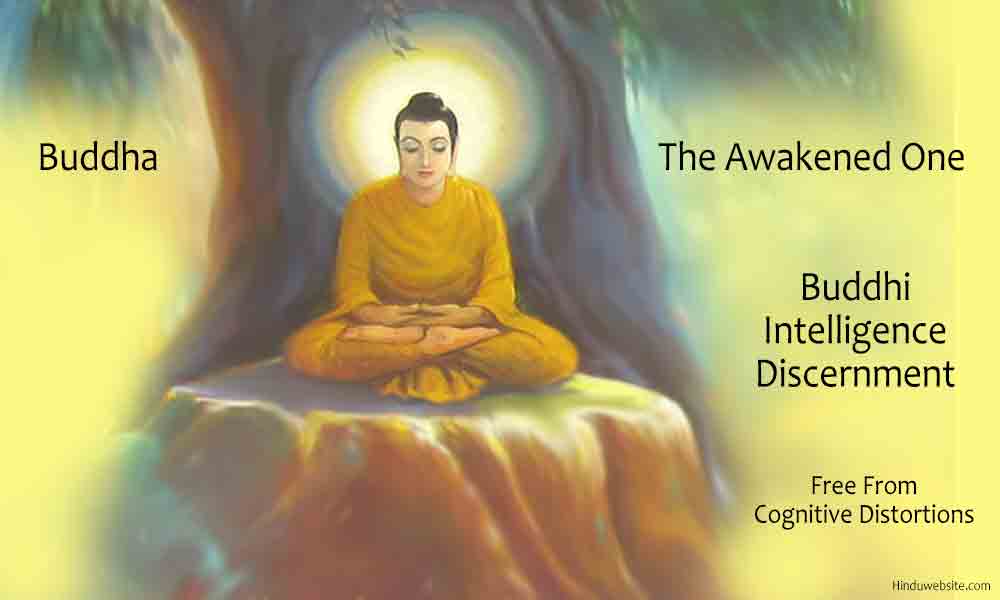
3. The three Jewels of Buddhism
The three jewels refer to the three main aspects of Buddhism namely the Buddha, the Dharma and the Sangha. In many Buddhist traditions, the monks are expected to take refuge in them at the time of their initiation, reciting the mantra, “Buddham sharanam gacchami, Dharmam sharanam gacchami and Sangham sharanam gacchami.” It means, “I go forth taking refuge in the Buddha, the Dharma and the Sangha.” They may also use it as an affirmation for spiritual cleansing to strengthen their resolve to attain Nirvana. In the days of the Buddha, his followers used to recite it during their wanderings and while seeking alms. It not only helped them remember the purpose and resolve but also attracted to the fold the people in the areas where they wandered.
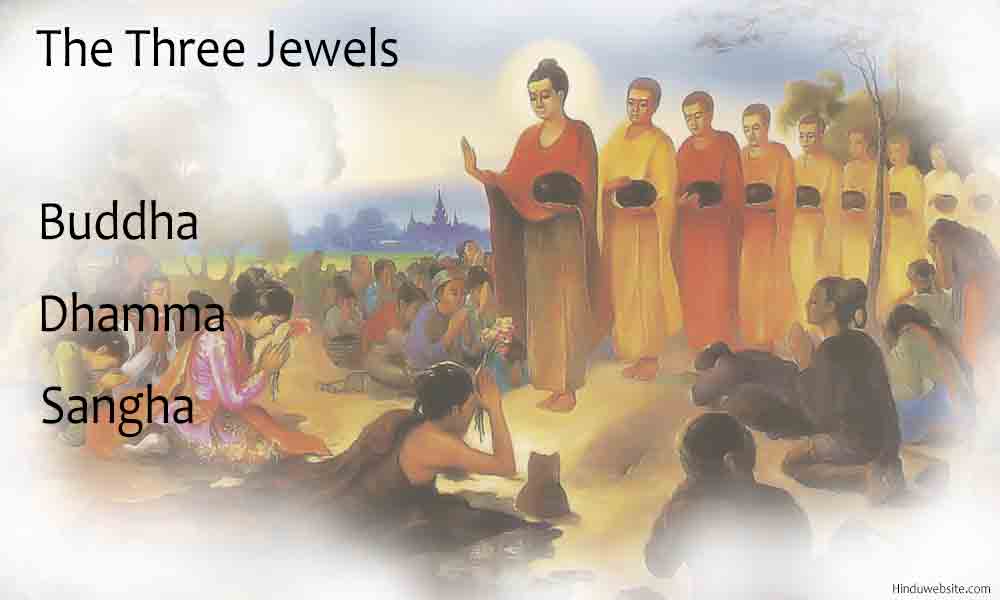
4. The core philosophy of Buddhism is this worldly and rational
The Four Noble Truths, which was proposed by the Buddha, constitute the core philosophy of Buddhism. In proposing them, the Buddha did not claim any divine authority. They were based upon his insightful observation and pure reasoning and can easily be validated or ascertained by anyone with discernment. The Four Noble Truths are as follows. First, life is full of suffering without exception. Second, desire is the root cause of suffering. Third, it is possible to end the suffering, and fourth, it can be done by right living on the Eightfold Path or the Middle Path. Indeed, the Buddha was not the first to propound them. They were already known in many spiritual traditions of ancient India. The Buddha was the first to put them in a proper order and bring them into central focus by suggesting a practical approach to resolve them.
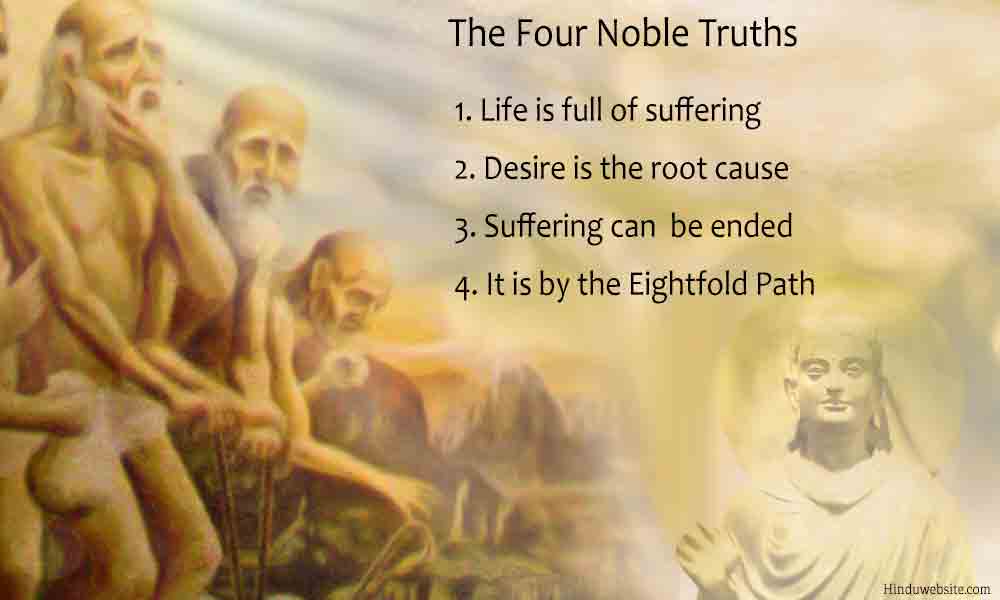
5. Buddhism believes in the impermanence of everything.
Buddhism believes that there is nothing permanent or eternal about existence. There is neither an eternal God nor an eternal soul. Also, there is no creator God or an efficient cause of creation. Even gods are subject to decay and disintegration. Things and beings come into existence through cause and effect due to the aggregation of things. Beings may have minds and bodies, but they are temporary formations and subject to aging, sickness and death. The impermanence of existence is a major source of suffering for beings, as they develop attraction and aversion towards sense objects and become attached to them through desires. Because of impermanence, beings are subject to birth and death. Due to karma, they become caught in the cycle of births and death. By overcoming desires, cultivating detachment and practicing virtue and discernment on the Eightfold Path, they can attain Nirvana and escape from it.

6. Nirvana is not the same as Moksha or Kaivalya
In all the religious traditions of India, liberation means final liberation from Samsara or the cycle of births and deaths. Hindus believe that upon achieving liberation (Moksha), the freed souls travel to the immortal world, where they exist forever, never to return. Jains also believe that upon liberation or aloneness (Kaivalya), souls attain the all-knowing awareness and ascend to the highest plane. Buddhists however believe that upon liberation, beings do not go anywhere. Since they do not possess eternal souls, they simply cease to exist or enter an indeterminate state. Nirvana means extinguishment of all desires and attachments, and thereby all becoming and being. It signals the end of individuality or the end of all formations and associations that go into the making of the being, following the dissolution of the mind and its constructions. Some even say that Nirvana is a state of emptiness or nothingness.

7. Buddhism prescribes Right Living on the Eightfold Path to end suffering
The Buddha prescribed eight sets of practices to end the suffering and attain peace, equanimity and Nirvana. In prescribing them, he advised his followers to avoid extreme practices and follow the Middle Path to minimize suffering and hardship. The eight practices are, right view, right resolve, right speech, right conduct, right livelihood, right effort, right mindfulness, and right meditation. They are further divided into three sets (3 + 3 + 2). Right speech, right action, right livelihood lead to the development of moral virtue (sila). Right view and right resolve lead to insightful wisdom (prajna). Finally, right effort, right mindfulness, and right concentration facilitate contemplation and mindfulness and lead to meditative absorption (jhanas). In other words, by practicing moral virtues, cultivating discerning wisdom, by knowing the importance of right thoughts and intentions in karma and rebirth and by training the mind through restraint, mindfulness and concentration to see things as they are, one can enter the highest state of meditative self-absorption (jhana) and attain Nirvana.
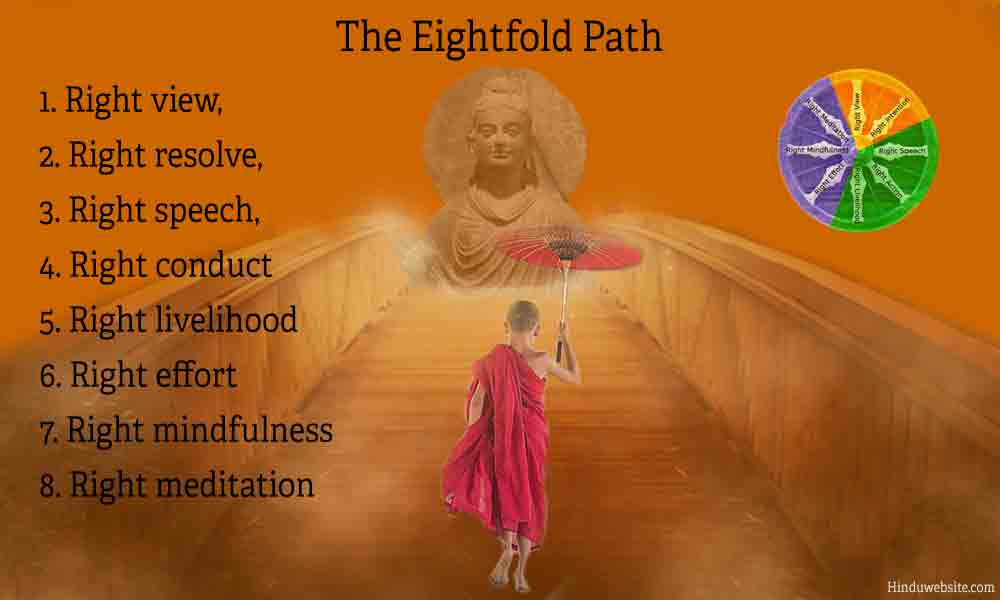
8. Buddhism has many schools and sects
A few hundred years after the Buddha, Buddhism underwent a major schism, resulting in two main sects, Hinayana and Mahayana. The former, also known as Theravada Buddhism, adhered to his original teachings, while the latter made significant changes to its principles and practices. Its followers elevated Buddha into a supreme deity and introduced the practice of his ritual worship. They also held that upon achieving Nirvana, beings attained oneness with the Buddha’s bodily essence. Another important concept was the idea that in the advanced stages of progress on the Eightfold Path, monks could postpone their liberation out of compassion and become Bodhisattvas to help other beings attain salvation. The Mahayana school also speculated upon the nature of existence and the state of Nirvana. Vajrayana Buddhism, also known as Tantrayana was another important sect, which emerged around 5th Century AD in India. A version of it traveled to Tibet, where it is still practiced. As Buddhism spread out of India, it acquired many local flavors, resulting in the development of many schools, sects and subsects such as Tibetan Buddhism, Chinese Buddhism, Zen Buddhism, etc.
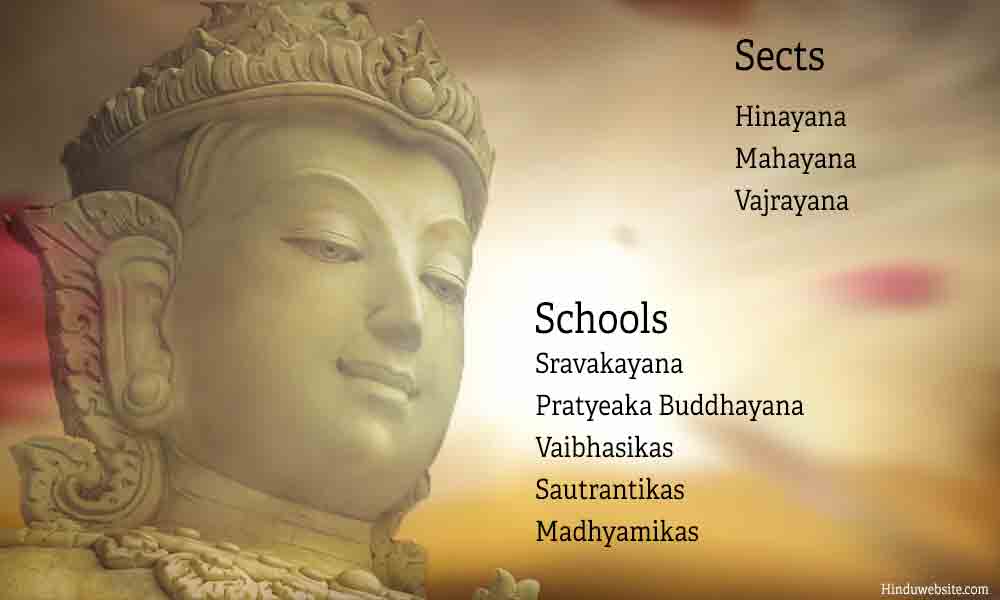
9. Buddhism is a well-organized religion
Buddhism lays special emphasis upon order and discipline in the practice of Dhamma. The Buddha not only laid down the essential philosophy and practice of Buddhism, but also established a specific code of conduct or rules and guidelines to ensure uniform practices among his followers. He divided them into four distinct groups namely the bhikkhus (monks), bhikkhunis (nuns), lay men, and lay women, and formulated specific code of conduct for the peace and welfare of each of them so that they could devote themselves to the practice of Dhamma in a stable environment and quickly attain Nirvana. As time went by, the rules became more complex to enforce discipline and prevent the disorganization and disintegration of the Sangha and the Dhamma. The monastic rules, which were thus formulated over a long time, became known as Vinaya (the code of conduct). After the death of the Buddha, those rules became a part of the Buddhist cannon. The Buddhist literature, which is vast, is also well organized into three distinct categories or baskets (pitakas) namely Vinaya (rules and regulations), Sutta or Sutras (sermons) and Abhidhamma (commentaries and expositions).

10. Buddhism perfected the art of meditation
Buddhist monks perfected meditation techniques, visualization and mindfulness practices to cleanse their minds and bodies and attain higher states of consciousness (jhanas). The Buddhist meditations practices which are worth mentioning are Anapana Sati, Samata, Vipasana. Anapana Sati is breath meditation, similar to Hindu Pranayama, in which a monk sits in an isolated place or a quiet place and concentrates on the in breathing and out breathing with mindfulness. Samata is a relaxation-cum-mindfulness technique which is used in the initial stages to calm the mind and experience joy and tranquility. Vipassana meditation is used in the latter stages to gain insight into the nature of impermanence of all things, especially the various aspects of the mind and body such as sensations, feelings, emotions, etc. Right Concentration is one of the eight practices of the Eightfold Path. Its practices lead to the elimination of unwholesome factors and cultivation of virtues and jhanas (meditative states of absorption). The meditation techniques are a part of the transformative and preparatory process for the attainment of Nirvana. They should not be practiced in isolation but in conjunction with other seven practices of the Eightfold Path.

Conclusion
Buddhism is deeply interwoven into the religion and culture of entire Asia. Although it declined in many countries, it still exerts its influence upon at least 30%-40% of the world population and their social, spiritual and religious lives. The Buddha is venerated in many countries as God himself, although he never wanted to be worshipped ritually as a supreme God. The practice gained roots in the Mahayana tradition because he gave freedom to his followers to practice Buddhism according to their own discernment. The freedom and flexibility which are inherent in it resulted in the emergence of numerous forms of Buddhism, each having a distinct flavor of its own, built around the core philosophy of the four noble truths and the eightfold path. Although Buddhism emerged as a rival tradition to Vedic religion in ancient India, the Buddha is greatly respected and venerated by Hindus as an incarnation of Lord Vishnu. Buddhism also profoundly influenced Hinduism, especially in the spiritual field. Many Buddhist practices found their way into Hinduism, and vice versa.
Suggestions for Further Reading
- The Symbolism of Snakes and Serpents in Hinduism
- Ten Distinguishing Features Of Hinduism
- Ten Reasons Why You Should Worship Shiva
- The Ten Main Duties (dharmas) in Hinduism
- The Ten Iconic Symbols of Hinduism
- Ten Teachings of the Buddha From the Dhammapada
- The Life and Teachings of the Buddha
- Concepts of Buddhism
- The Concept of Anatta or Not-Self in Buddhism
- History Of Buddhism, Early Period
- The Eightfold Path Of Buddhism
- The Four Noble Truths of Buddhism
- The History of Buddhism
- Buddhist Meditation Techniques
- Buddhism - The Middle Way
- The Meaning and Practice of Mindfulness
- Practical Buddhism - Meditation Techniques and Ethical Practices
- Nirvana or Nibbana in Buddhism
- Buddhist Schools of Philosophy
- Meat Eating or Vegetarianism in Buddhism
- Essays On Dharma
- Esoteric Mystic Hinduism
- Introduction to Hinduism
- Hindu Way of Life
- Essays On Karma
- Hindu Rites and Rituals
- The Origin of The Sanskrit Language
- Symbolism in Hinduism
- Essays on The Upanishads
- Concepts of Hinduism
- Essays on Atman
- Hindu Festivals
- Spiritual Practice
- Right Living
- Yoga of Sorrow
- Happiness
- Mental Health
- Concepts of Buddhism
- General Essays